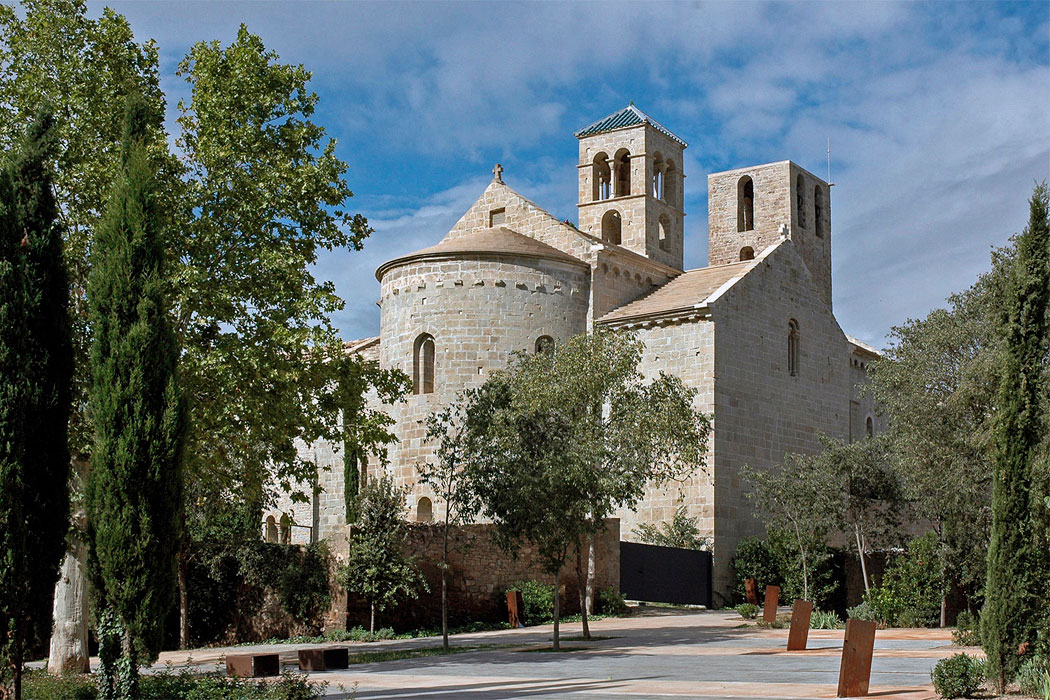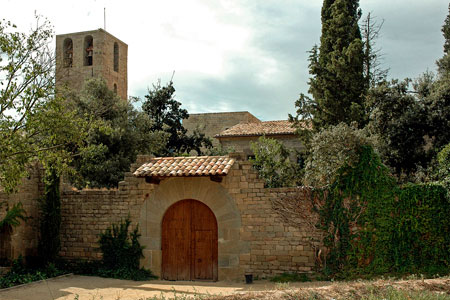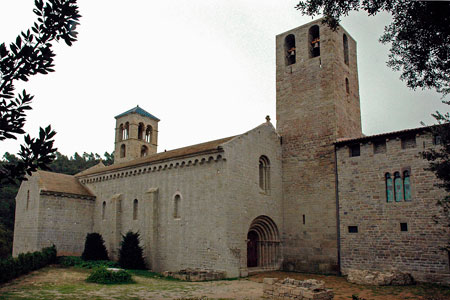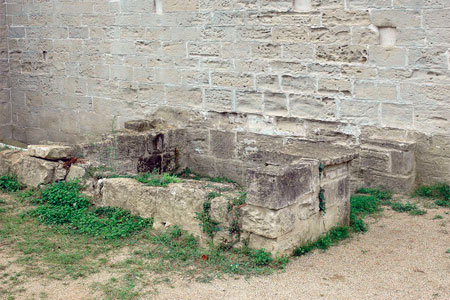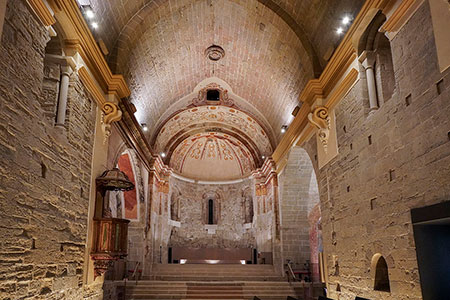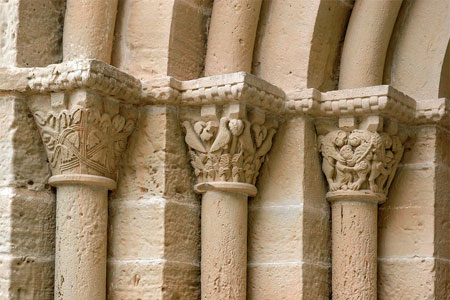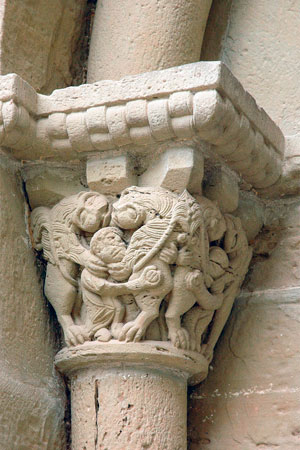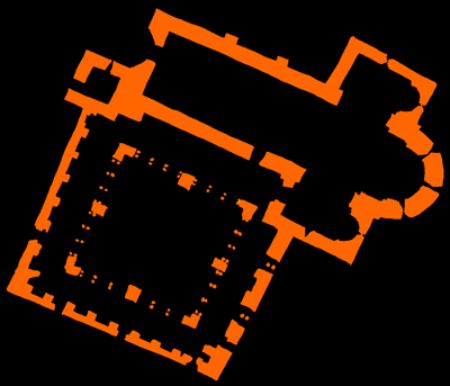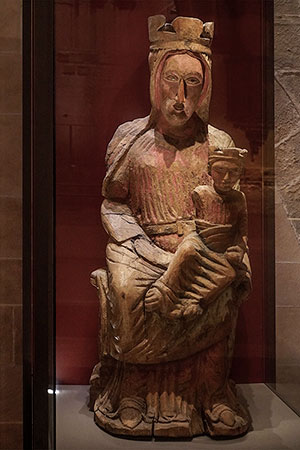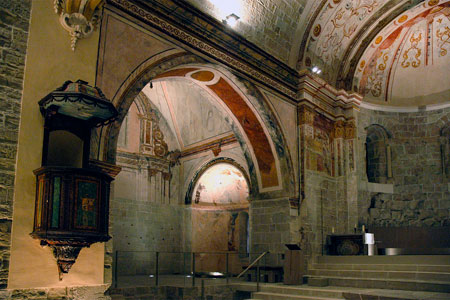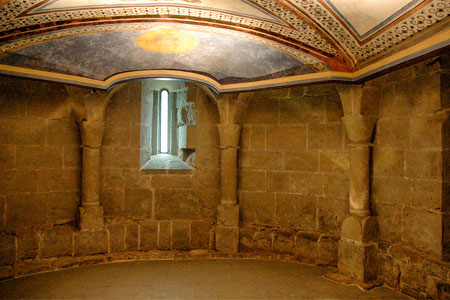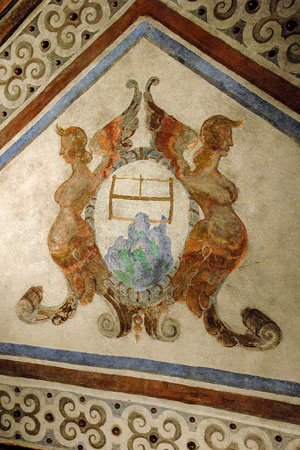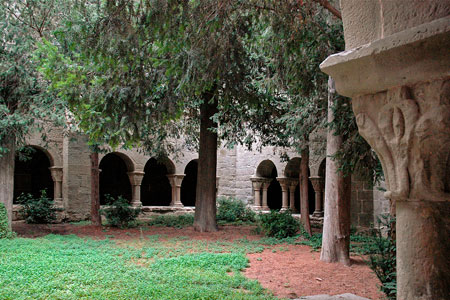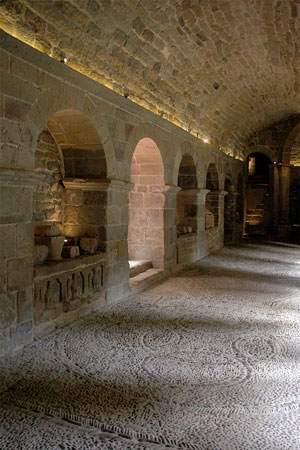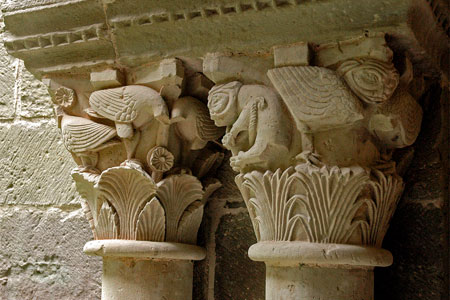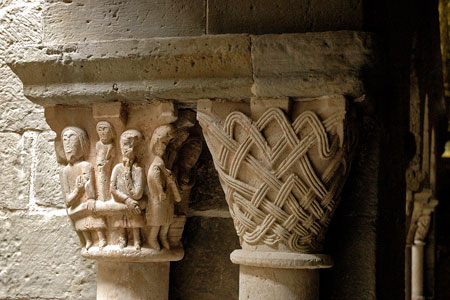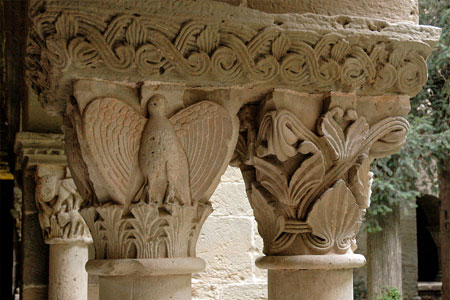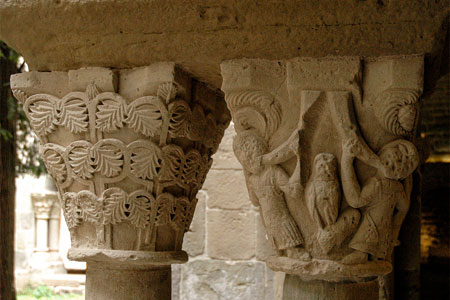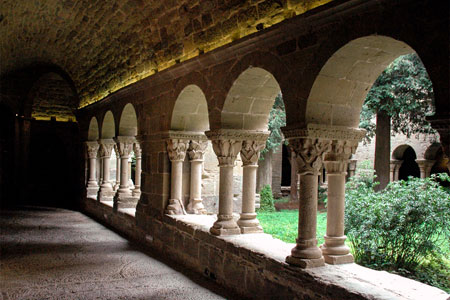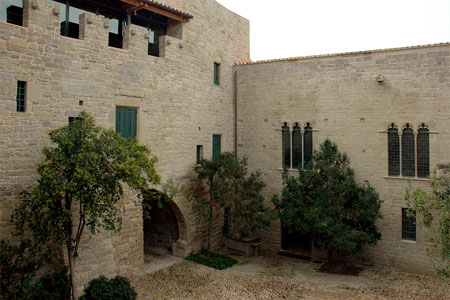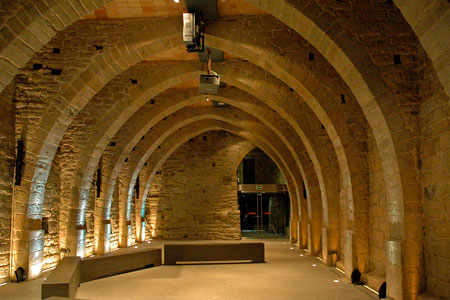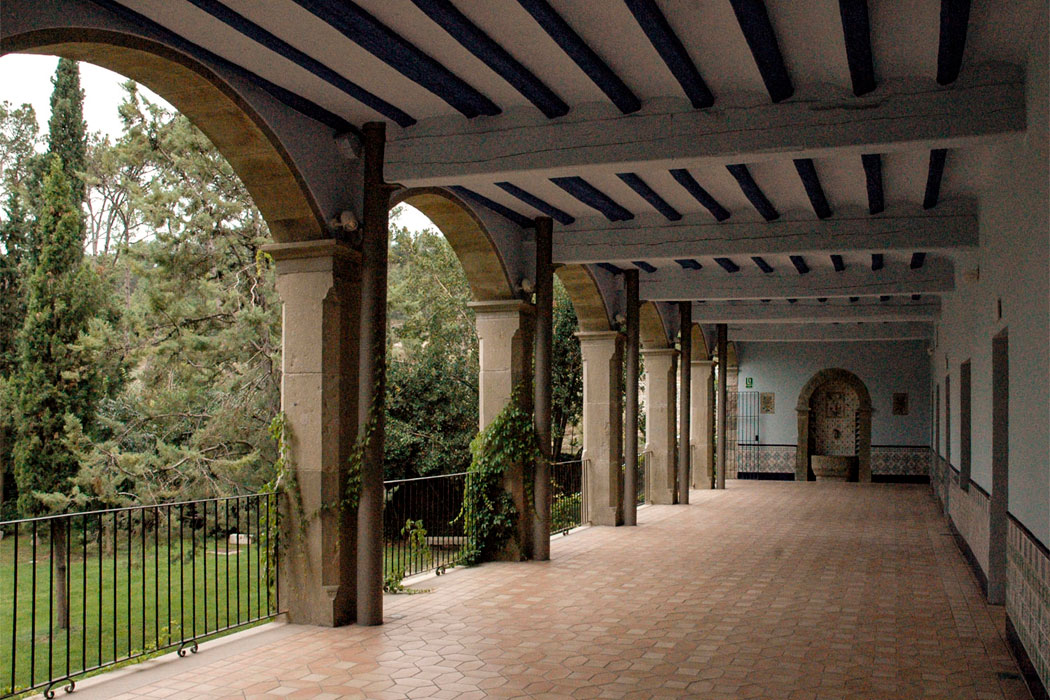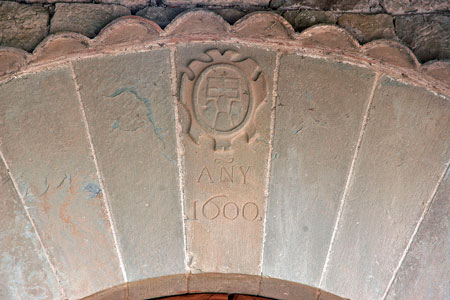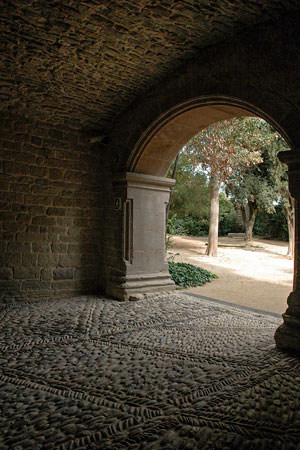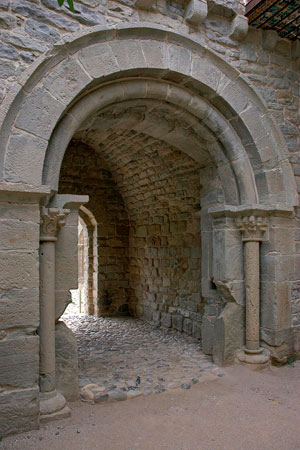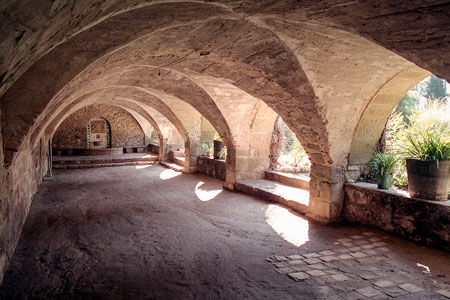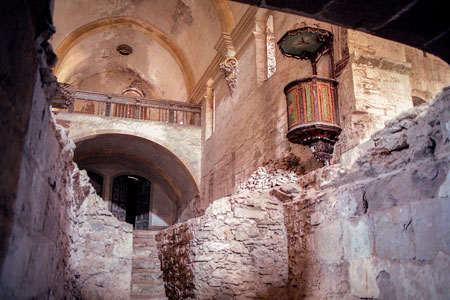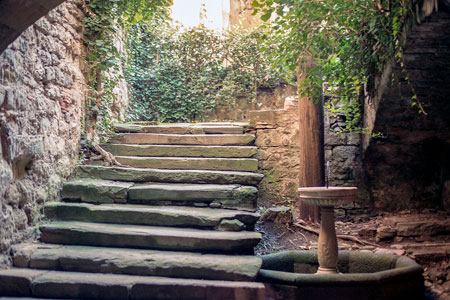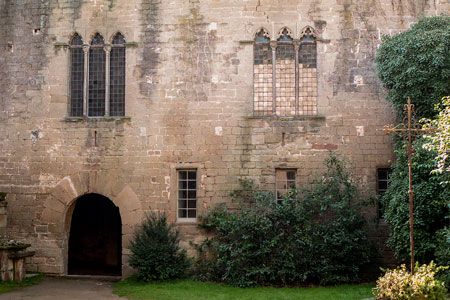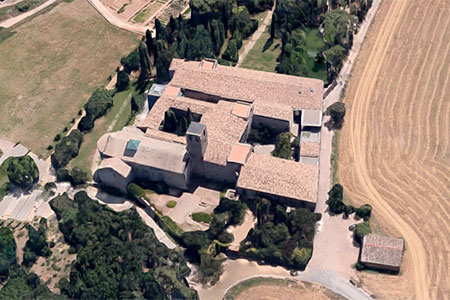The former Benedictine abbey of Sant Benet de Bages was founded in the mid-10th century on the initiative of the Sal-la (?-c. 969) and Ricarda spouses, who endowed it financially. The founder, a personage related to the Viscount House of Osona, had participated in the repopulation of the territory after its recovery. In 950, he acquired by exchange the land on which the monastery would later be built.
The founder himself obtained papal guardianship on a trip to Rome, and at the same time brought back the relics of Saint Valentine. The first abbot of the house was Abbó, known since 967. The church was consecrated in 972 in the presence of the bishops of Vic, Urgell and Barcelona, as well as members of the family of the founders, who were by then deceased. On this occasion, its dependence on Rome is again mentioned. In 999 the establishment was attacked by Almanzor's troops. After a few years without an abbot, in 1002 a new one was chosen (Ramió 1002-1032), elected by the monks and without the intervention, effective until then, of the founders' family, who had determined that the leaders of the community should be their relatives. In 1016 a bull of Pope Benedict VIII placed the monastery under his direct jurisdiction.
In 1075, on the death of Abbot Miró, brother of Ramon Berenguer I, the situation changed and Sant Benet was joined to the monastery of Saint-Pons-de-Thomières (Hérault, Languedoc-Roussillon). At the end of the 12th century, independence was regained and Abbot Benet (1108-1152) was elected from among the members of the community. In 1114, the establishment suffered a new Islamic incursion, the effects of which were very serious, and the present church, completed around 1212, had to be rebuilt. The construction of the cloister then began, using elements from the previous one
In 1348, during the Black Death, the community almost completely disappeared. By the mid-16th century, the monastic buildings were in a state of great disrepair. In 1593 it lost its independence and was united to Santa Maria de Montserrat, according to a papal bull of Clement VIII. According to this, Montserrat left Sant Pau del Camp and obtained the more profitable direction of Sant Benet. This union meant that, like Montserrat, it became part of the Congregation of Valladolid. Sant Benet became a school of the Arts and a center for elderly monks.
The monastery remained active until 1835, when it ceased to have a community following the confiscation of ecclesiastical buildings, the properties were auctioned off and the buildings were used as dwellings by the workers of a textile industry. In 1909, the site was acquired by the family of the painter Ramon Casas and Josep Puig i Cadafalch oversaw its restoration. In 1931 it was declared a national monument. In 2000 it was acquired by the Caixa de Manresa, which took charge of restoring the complex and in 2007 inaugurated a complex known as Món Sant Benet dedicated to disseminating the history of the monastery, of the period when it was the residence of the Casas family and of gastronomy. It now belongs to the Catalunya La Pedrera Foundation.
The original church and cloister had to be rebuilt following the Saracen attack in 1114. These are the oldest parts. To the east of the cloister should have been the chapterhouse, which has now practically disappeared. Later, a first floor was added to the cloister. In the 14th century, a new Gothic structure was built and used as a cellar. To the west is the abbey palace, dating from the 17th century. The church has a single nave with a transept and three apses. The crypt has been preserved. The western doorway is semicircular, with undecorated archivolts and three capitals on each side. It has a second, simpler doorway that leads to the cloister. The remains of what would have been the pantheon of the founders are preserved in front of the church.
The cloister has four galleries with double columns, a total of sixty-four, with their decorated capitals. It would have been built between the 12th and 13th centuries and contains some reused pieces, such as a capital in the east gallery, with bas-reliefs, perhaps dating from the 10th century. Another of the capitals mentions the name of one of the architects of the work: a certain Bernat. A window from the old chapterhouse has been preserved. In the cloister itself there are several tombs from the Gothic period.
- ABELLA, Pablo (2009). Mutaciones arquitectónicas en el monasterio de Sant Benet de Bages (siglos X-XIII). Els monestirs benedictins de l'antic comtat de Besalú. Besalú: Amics de Besalú i el seu Comtat
- BENET I CLARÀ, Albert (1984). Sant Benet de Bages. Catalunya romànica. Vol. XI. El Bages. Barcelona: Enciclopèdia Catalana
- BOLÓS, Jordi; HURTADO, Víctor (2004). Atles del comtat de Manresa (798-993). Barcelona: R. Dalmau Ed.
- COSTA, Xavier (2019). Paisatges monàstics. El monacat alt-medieval als comtats catalans (segles IX-X). Tesi doctoral. Universitat de Barcelona
- DOMÈNECH I MONTANER, Lluís (2023). Sant Benet de Bages. Canet de Mar: CEDIM
- ESPAÑOL, Francesca (2001). Sant Benet de Bages. Manresa: Angle Editorial
- FERRER, Llorenç (2018). San Benet de Bages, entendre un monestir. Manresa: C. E. Bages
- GAVÍN, Josep M. (1979). Inventari d'esglésies. Vol. 5. Bages. Barcelona: Arxiu Gavín
- GIBERT REBULL, Jordi (2015). Del Conflent a la conca d’Òdena. La família del veguer Sal·la dins el marc de l’expansió del comtat d’Osona-Manressa al segle X. Miscellanea Aqualatensia, núm. 16
- GUSTÁ BONDIA, Jaime (1887). Monasterio de San Benito de Bages. Barcelona. F. Giró
- ORDEIG I MATA, Ramon (1999): Catalunya carolíngia. Vol. IV Els comtats d’Osona i Manresa, 1ª part. Barcelona: I. Estudis Catalans
- PAGÉS I PONS, Joan (1978). El monestir de Bages a Bianya. Anals 1977. Annals del Patronat d’Estudis Històrics d’Olot i Comarca
- PAGÈS I PONS, Joan (1984). Les Preses i el monestir de Sant Benet de Bages. Diputació de Girona
- SALVADÓ I MONTORIOL, Joan (2012). El monestir benedictí de Sant Benet de Bages. Fons documental. Identificació, edició i estudi. Segles X-XI. Tesi. Universitat de Lleida
- SERRA SELLARÈS, Francesc (2005). Sant Benet de Bages a l'època montserratina (segles XVI-XIX). Tesi doctoral. Universitat Autònoma de Barcelona
- SITGES I MOLINS, X. (1975). Sant Benet del Bages. Manresa: G. Montañà
- SOLÀ, Fortià (1955). El monestir de Sant Benet de Bages. Manresa: C. Excursionista del Bages
- SUBIRANAS, Carme; VILA, Goretti (2011). Sant Benet de Bages. Evolució arquitectònica del monestir a partir de les dades arqueològiques. Tribuna d'Arqueologia 2008-2009. Generalitat de Catalunya
